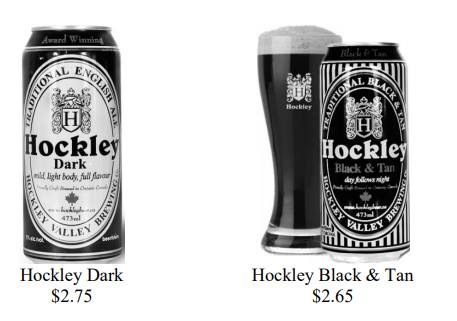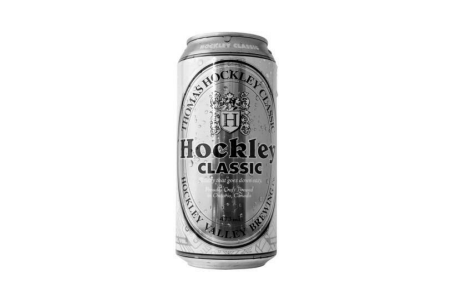Problem Statement
Based on the sales during the latest festival, Hockley Valley Brewing Co. is considering launching a new light beer, Hockley Classic, instead of its other product, Black & Tan. However, the team faces a variety of challenges, including potentially false sales evaluations, dense competition in Ontario, and insecurities about the product line.
Situation Analysis
Company Objectives, Background, and Forecast
Hockley Valley Brewing is a local manufacturer with a rich history and deep connection with Hockley and the Ontario region. Its initial objectives focused on bringing more attention to the small town by producing high-quality beers. As Hockley Valley Brewing expanded its scope of influence, the company introduced a larger variety of products and aimed to improve its sales and output continually.
Considering the current strategy, Hockley Valley Brewing has a product mix of five beer types marketed through the Beer Store and the LCBO. However, it might shift its focus to lighter beers shortly due to their rising popularity (Callejo et al., 2019). This change is necessary because many customers, particularly early adopters and the majority, will shift to innovative products, drastically modifying the demand.
SWOT Analysis
The company’s primary strengths include a focus on local manufacturing, a deep connection with the Liquor Control Board of Ontario (LCBO), and a solid position in the market. Moreover, a change in the popularity of lighter beers presents an excellent opportunity to introduce new products and grant a competitive advantage (Dunn, 2014; Callejo et al., 2019). On the other hand, a large variety of local and international brewers creates dense competition in the region. Hence, a relatively limited sample of products is a notable weakness, and the product differentiation from rivals presents severe risks to Hockley Valley Brewing. Based on this analysis, the company should utilize its strengths in the new product launch, particularly the connection to the LCBO, and differentiate Hockley Classic from competitors to minimize risks.
Market Analysis
Molson and Labatt from the North American market dominate the beer industry in the region, while local breweries present limited competition. Despite being less popular in Canada, craft beer sales in Ontario amounted to $210 million in 2012, representing a growing segment (Dunn, 2014). As for the marketing mix, Hockley primarily sold its beer through the LCBO, with some presence in The Beer Store and other liquor commissions.
Segmentation Analysis
The market is generally segmented into producing dark, amber, and light ales. The Ontario industry is dominated by Mill Street Brewery, a pioneer in the craft beer movement, and Steam Whistle, which produces a premium pilsner. Despite its success, the dark beer segment may have lower profitability due to lower sales volume. Conversely, sales data from the Orangeville festival revealed a demand for light beers, indicating an attractive segment (Dunn, 2014). Hockley aims to capture a larger market share and fill the niche by launching a light beer brand.
Competition Analysis
The Ontario brewing industry competes highly with active global and local manufacturers. As mentioned briefly, the two primary companies with light beer flagships are Mill Street Brewery and Steam Whistle (Dunn, 2014). The former provides many beers to cover most market niches, while Steam Whistle has only one premium product. As a result, both companies present significant risks to Hockley Valley Brewing in most segments of the industry.
Financial Analysis
In the case of introducing a new product, a preliminary financial analysis is pivotal to determine the practicality of the project and associated risks. With Hockley Classic, assuming the total direct cost is $1.62 and a selling price of $2.60 per can, the contribution margin is $0.98 (Dunn, 2014). By totaling the fixed costs, the break-even point for the Hockley Classic craft lager would be approximately 26,000 cans (Dunn, 2014). In the best-case scenario, Hockley’s new light beer gains traction in the market. In the worst-case scenario, the new light beer fails to resonate with consumers. In the expected scenario, the new light beer performs reasonably well.
Case Keys
The primary success factor is the effective optimization of production cost and time. Moreover, the company’s consistency and rapport with the main distributors, such as LCBO (Dunn, 2014), enhances the entry process to the market. However, underlying risk factors may hinder the product’s success. These key uncertainties include a possibility of flawed assessment due to seasonal sales, increased competition in the attractive segment, and a false estimation of market trends.
Alternatives
The primary alternative is to expand the focus on darker beers since Dark and Black & Tan are currently the flagships of Hockley Valley Brewing (see Exhibit 1). Although this segment is in the decline stage, it is the core element of the company’s brand image, according to recent evaluations. On the side of quantitative considerations, the notable risk of this approach is that early adopters will switch to lighter beers, resulting in financial loss for the brewery. Another critical fundamental uncertainty is that the current product mix needs to be more innovative, and customers might switch to competitors’ products.
Recommendations
Based on the analysis, introducing a new Hockley Classic product (see proposed design in Exhibit 2) seems a favorable solution for the company. Dropping the Dark and Black & Tan production reflects a high potential for success, optimizing production cost and time. Market trends in Ontario and North America showed a growing demand for lighter beers; hence, the expected rate of return is high (Dunn, 2014). Regarding competitive reaction, Hockley Valley Brewing Co. will compete with the established brands listed above.
One risk is the possibility of a flawed assessment due to seasonal sales. In the short term, the implication is modifying the company’s product mix. In the long term, the success of Hockley Classic will determine the company’s market position. The alternative increases the integration into the marketing, reducing the cost of space in the Beer Store and LCBO shelves.
Action Plan
The preferred action plan is associated with the conceptualized market entry by launching the Hockley Classic. The first phase focuses on product modification and optimization, refining the recipe for Hockley Classic and differentiating it from the rest of the product line. It aims to create a new flagship light beer that can effectively change the company’s brand image and attract early adopters of the latest market trends. The second phase revolves around the marketing and promotion strategy to secure the market niche before competitors. In the third stage, shelf space in the LCBO and the Beer Store will be secured by replacing the Black & Tan product line (Grewal et al., 2021).
The contingency plan focuses on exploring additional distribution channels, critical in virtually any market (Katsikeas et al., 2019). Heavy reliance on the LCBO and the Beer Store presents significant risks to implementing the plan. Lastly, regular market research will enable the company to adapt strategies for sustained growth.
References
Callejo, M. J., Tesfaye, W., González, M. C., & Morata, A. (2019). Craft beers: Current situation and future trends. In Martínez-Espinosa, R. M. (Ed.), New advances on fermentation processes (pp. 83-101). InTech Open.
Dunn, I. (2014). Hockley Valley Brewing Co. Inc. Ivey Publishing.
Grewal, D., Levy, M., & Lichti, S. (2021). Marketing (5th ed.). McGraw-Hill Education.
Katsikeas, C. S., Leonidou, L. C., & Zeriti, A. (2019). Revisiting international marketing strategy in a digital era. International Marketing Review, 37(3), 405–424. Web.
Attachments

